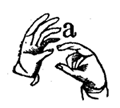Tips to assist deaf or hearing impaired persons

Speaker communication
tactics & tips to assist deaf or hard of hearing people
When someone speaks, clues are gained, not only from what is heard but
also from what is seen. These clues
complement and supplement each other, helping the hearing impaired
person to piece together the conversation.
For the deaf/hard of hearing person, the visual clues of speech become
very important. Simple actions on your part
determine the ease with which these visual clues can be followed.
Repeat the sentence again if necessary and then perhaps rephrase what you want to say. You may not be aware of this but some words are more difficult to lip-read than others, for example, the month of ‘March’ is easier to lip-read than ‘August’. In the word ‘March’ the shapes making the ‘M’ and ‘ch’ are visible on the lips, but the components in August are made inside the mouth so there is nothing to see